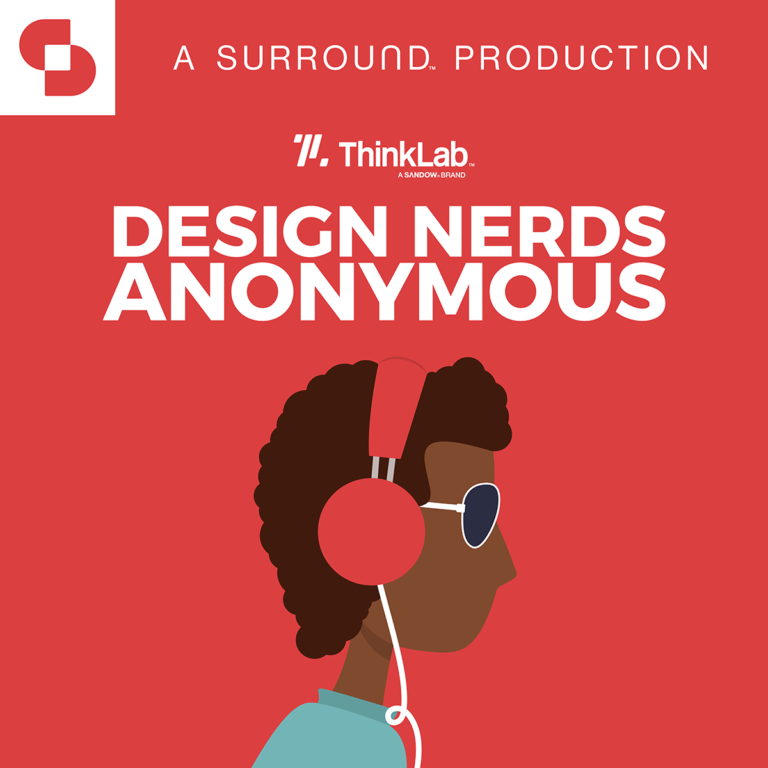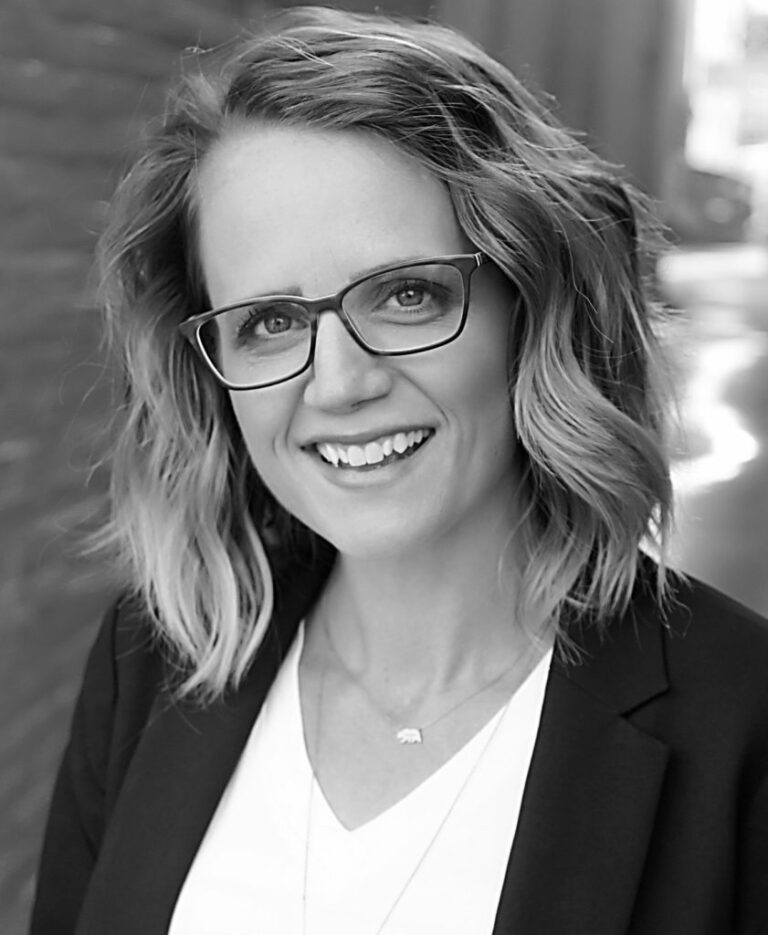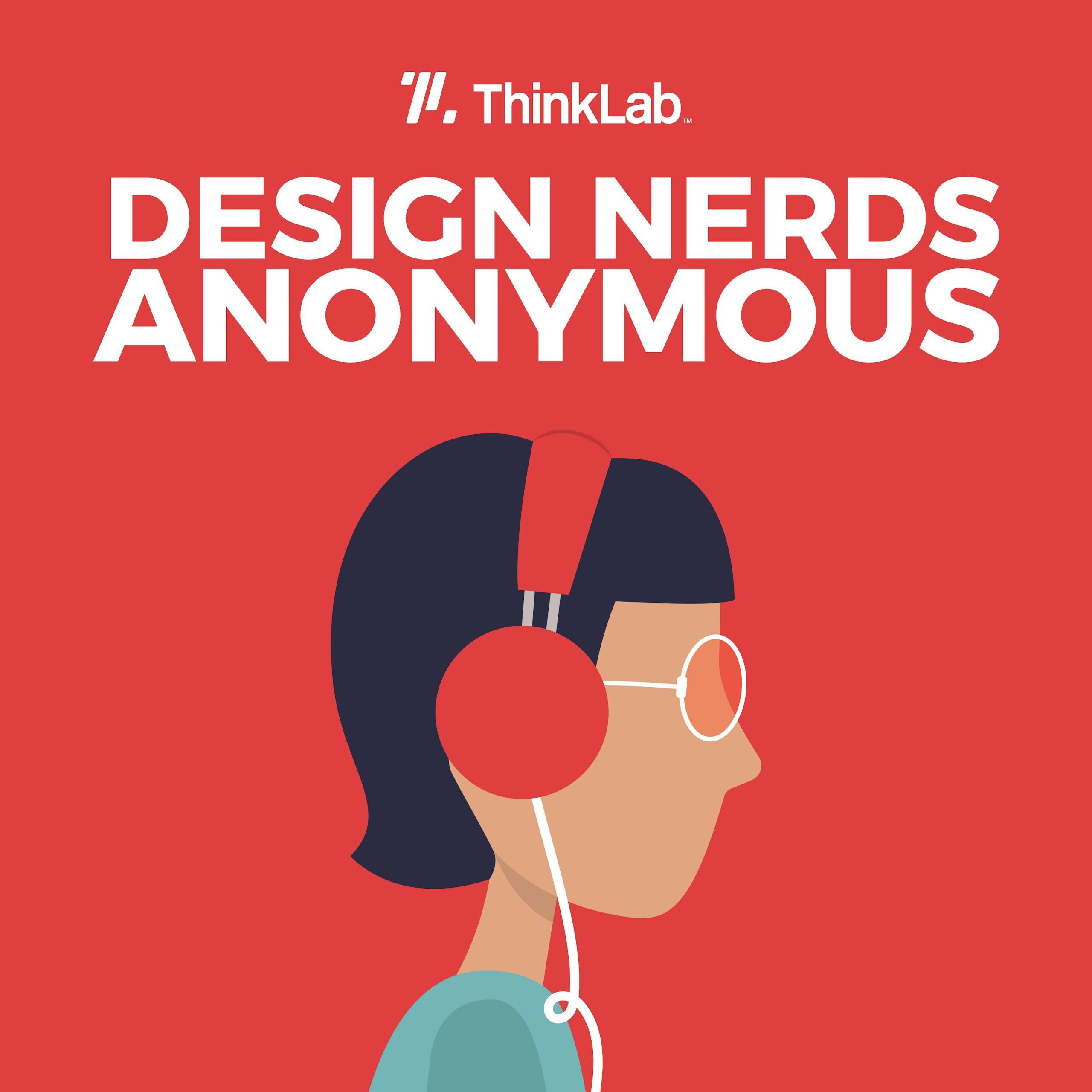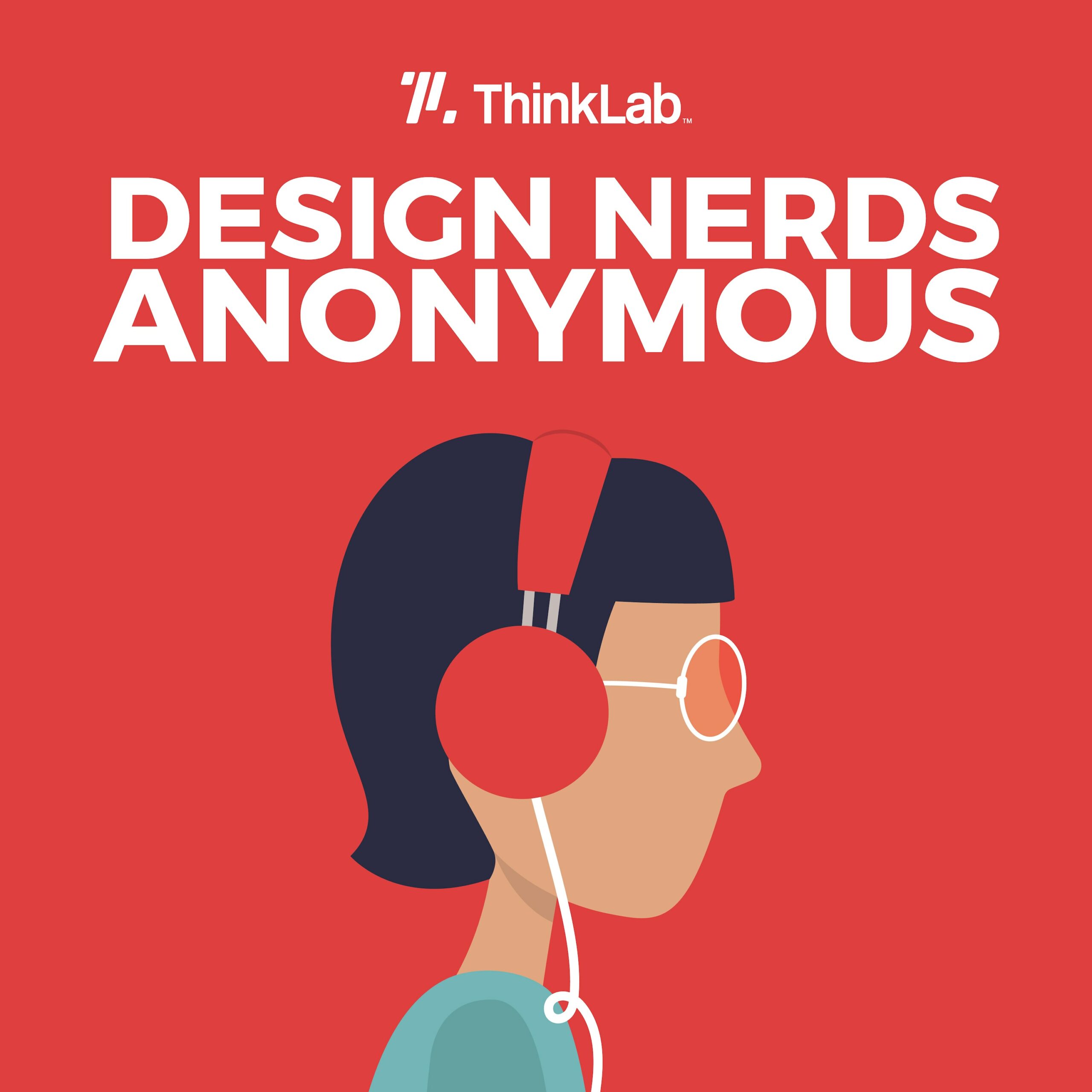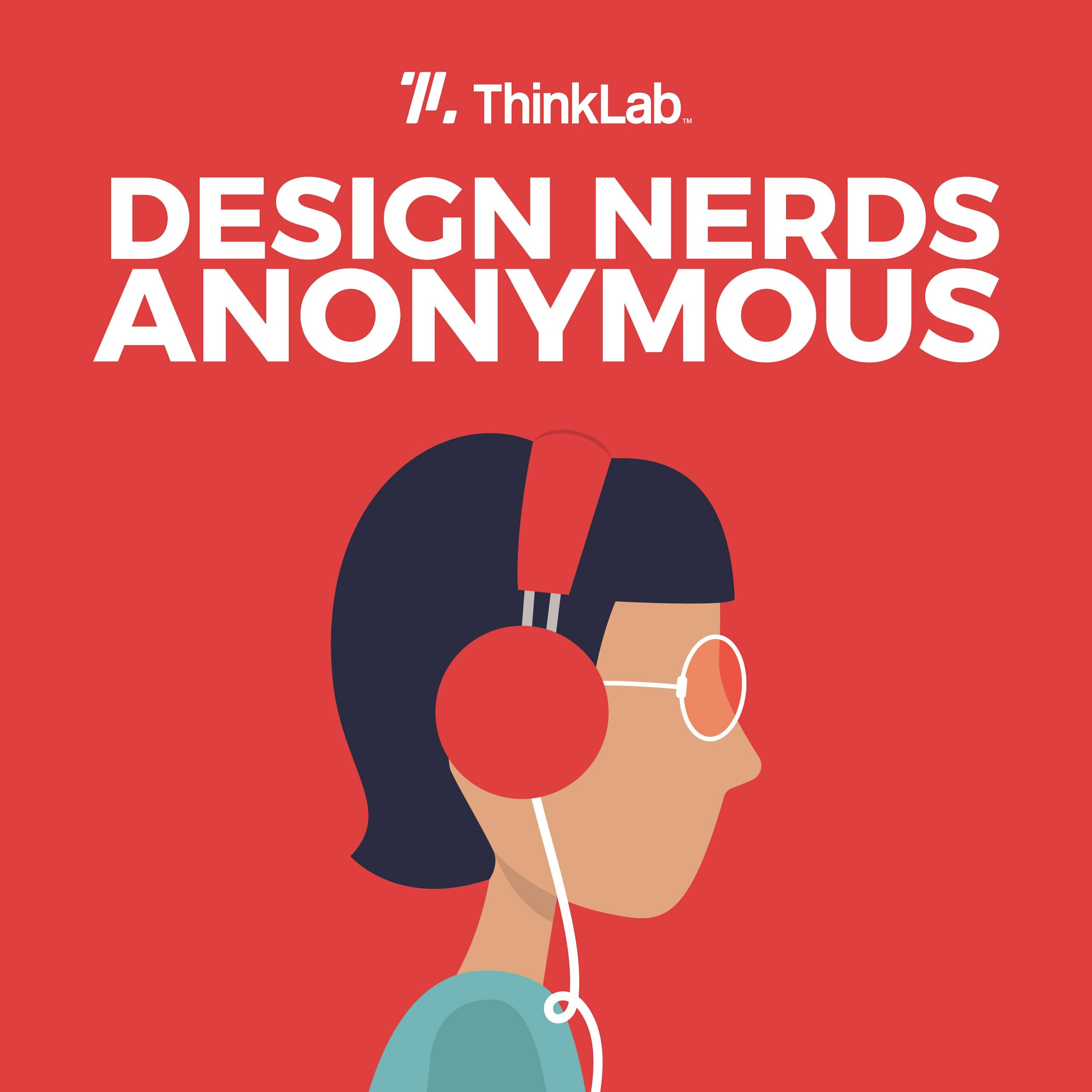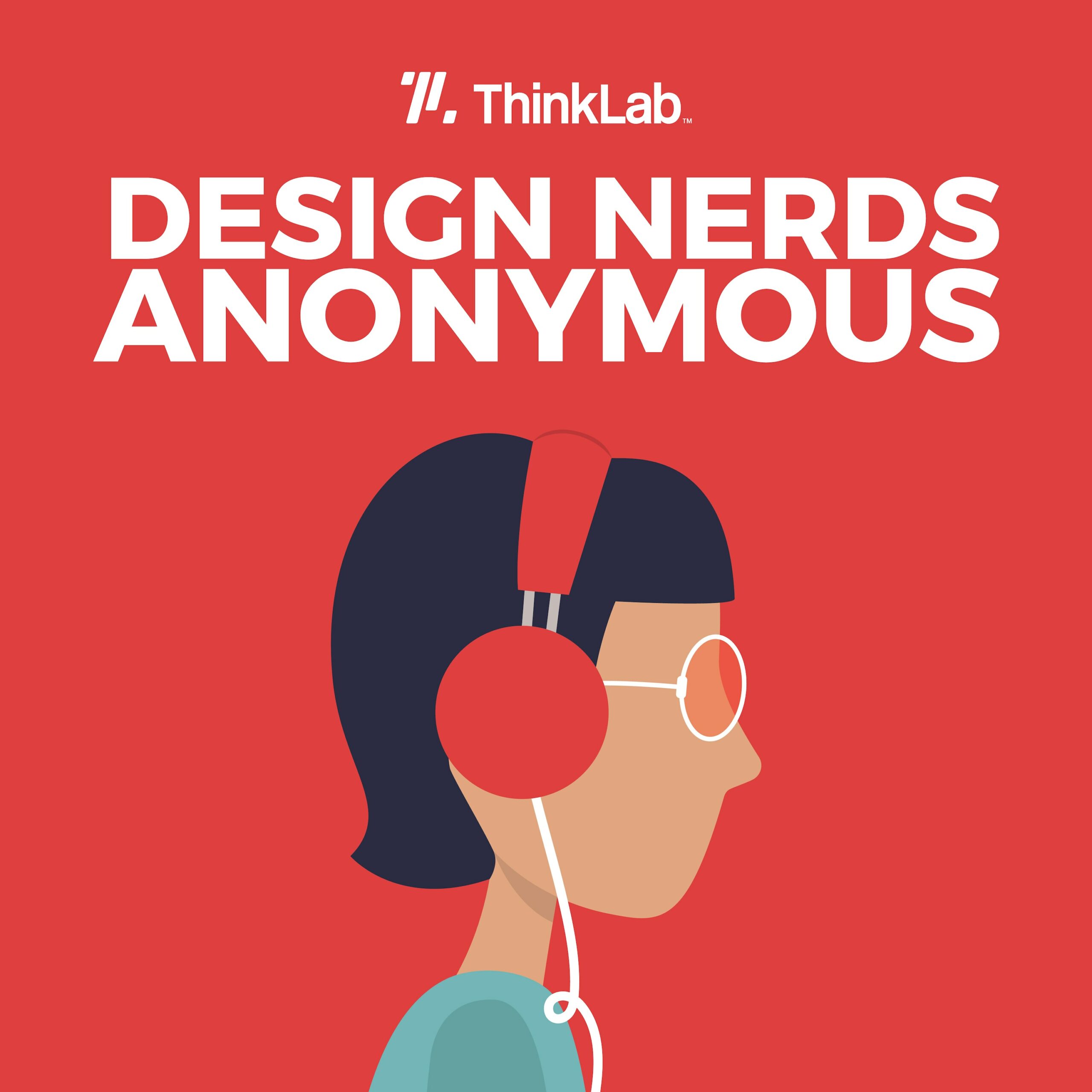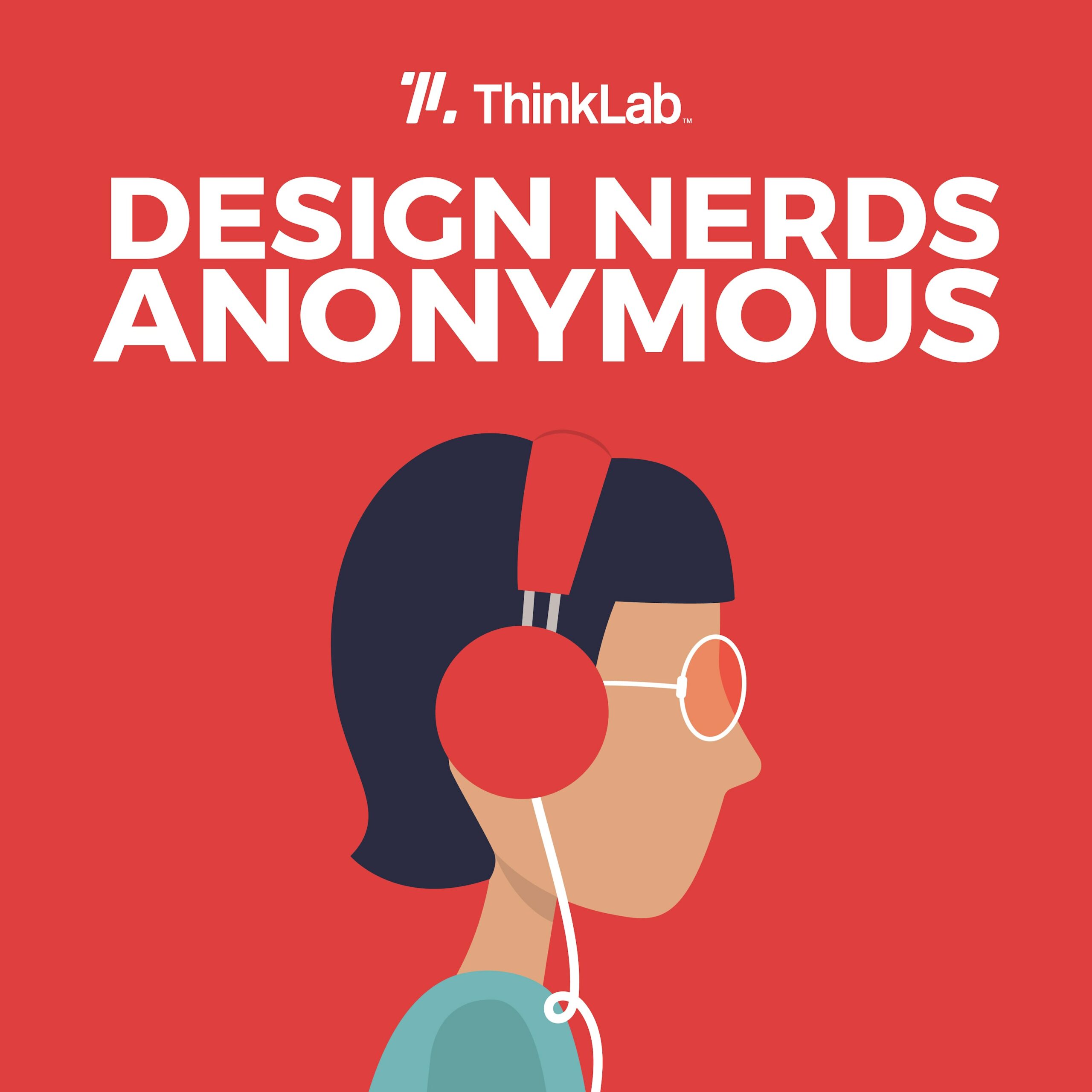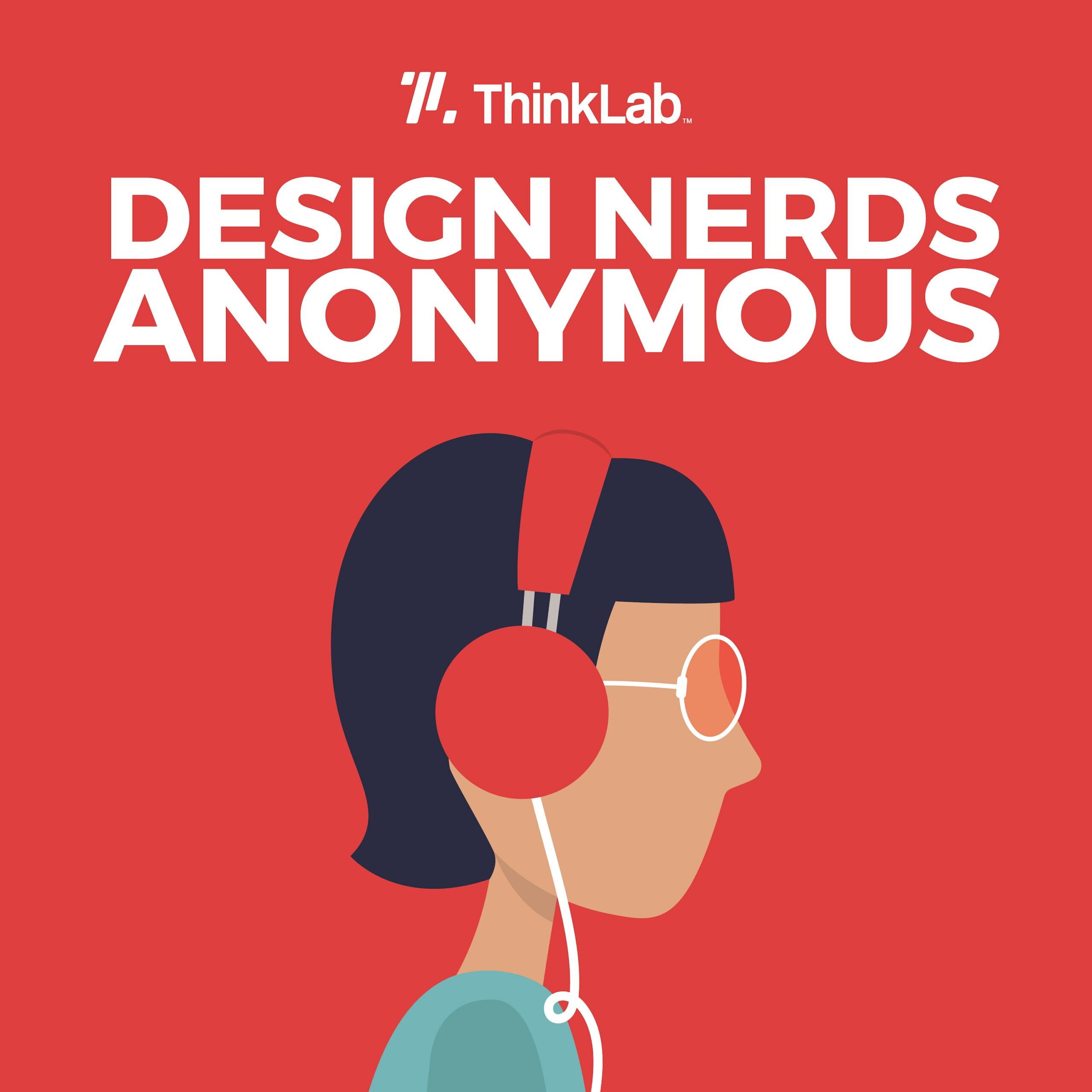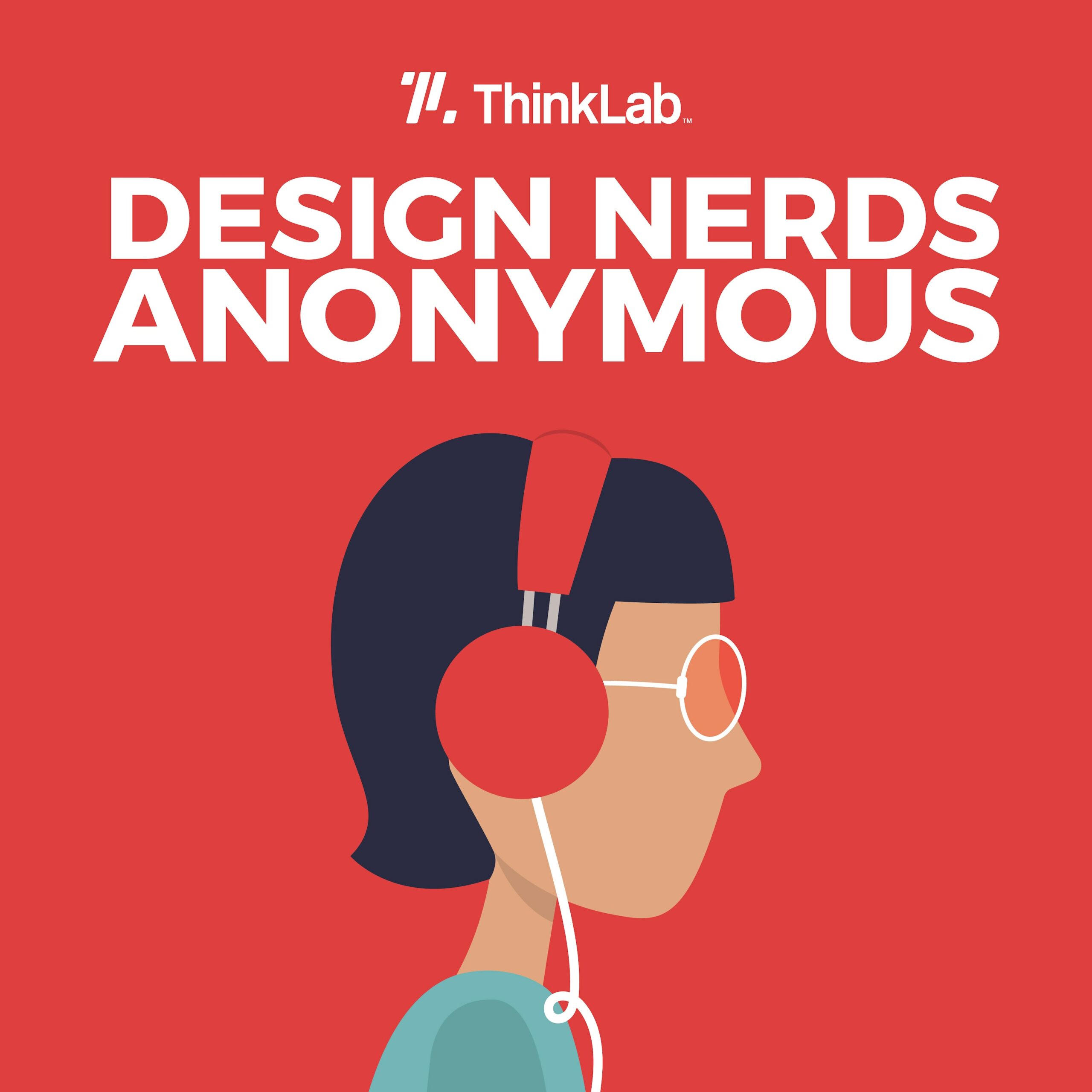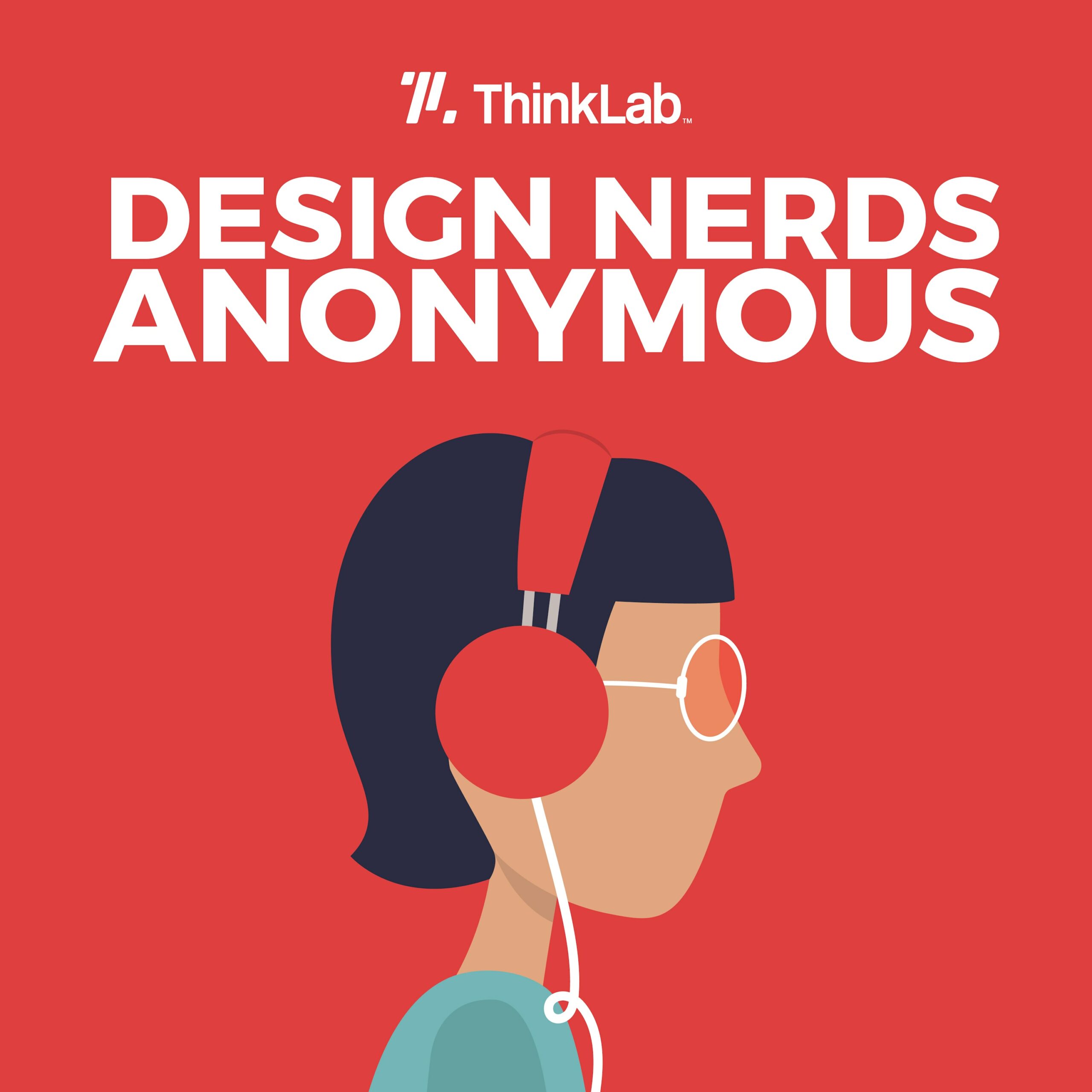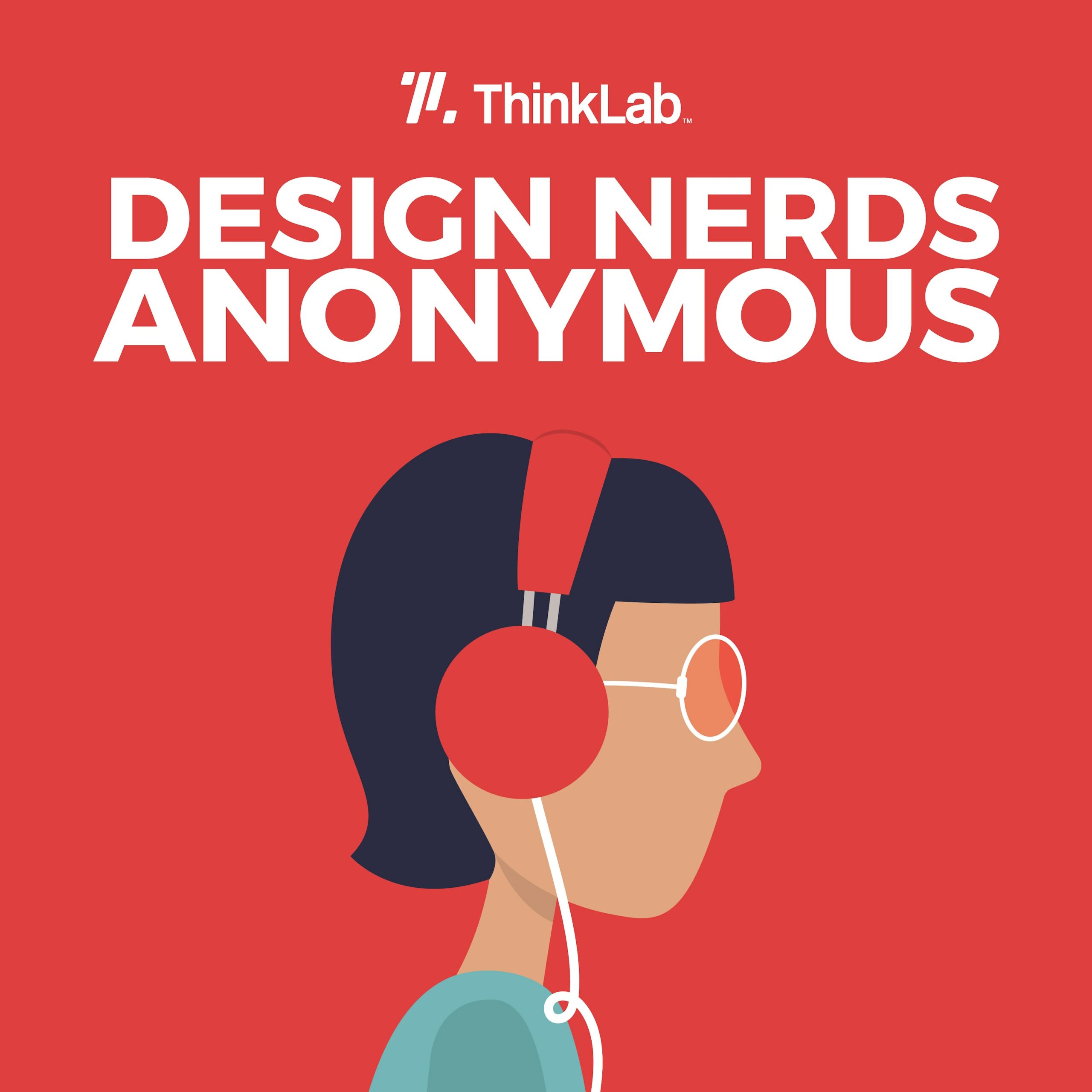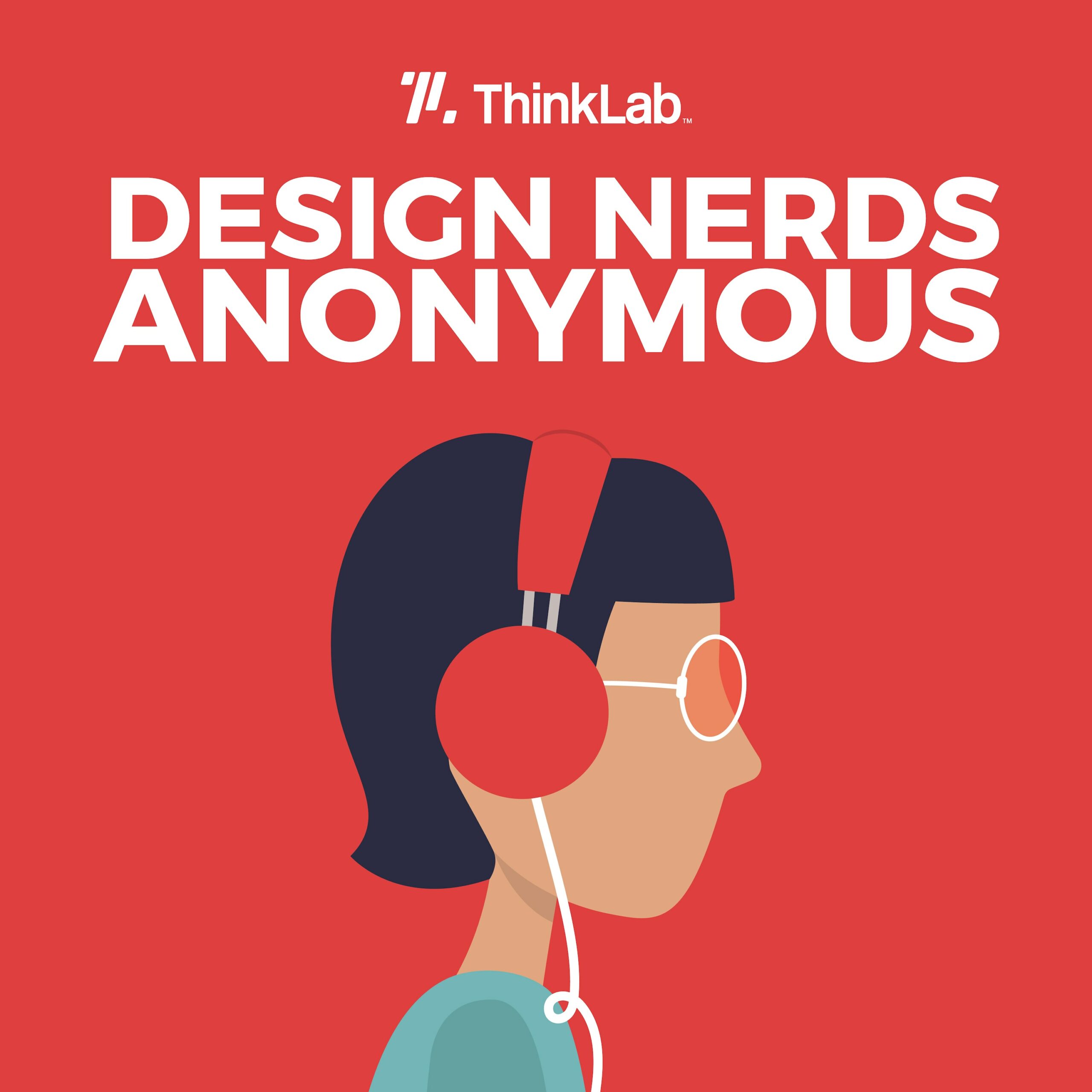Amid so much upheaval in the design industry, product specification is undergoing a sea change. In this episode, ThinkLab examines pain points in the process and dives into how two leading-edge companies are developing phygital solutions to chart a new course (no pun intended.)
Our first guest, Amanda Darley, vice president of marketing at Mannington Commercial, discusses how the company has responded to industry-wide challenges, such as an uptick in re-specifications, by developing its own online inventory tracking, visualizers, and content – and why those innovations have proven successful for specifiers.
Then we’re joined by Meghan Sherwin, Keilhauer’s chief marketing officer, who shares the one big play everyone in the industry should be considering when it comes to technology. Listen in as she describes the firm’s innovative approach to the showroom experience and the unique ways they are integrating a phygital (physical + digital) journey for designers.
In this episode:
[5:24] Amanda describes how a simple website addition has become an important pipeline for connecting designers to reps.
[12:40] Amanda talks transparency and the key areas where it could drive growth in the industry.
[14:03] Meghan shares the unique blend of physical and digital elements involved in elevating Keilhauer’s new showroom design.
[19:09] Meghan explains the one thing she thinks is set to fundamentally change the specification process in the near future.
Connect with our interviewees on LinkedIn:
This season of Design Nerds Anonymous is brought to you by Mannington Commercial, Keilhauer, theMART, and NeoCon, companies doing big things to move the design industry forward.
Download our leading-edge playbook, 100 Ways to Create a Phygital Sales and Marketing Strategy.
Finally, thanks to Hannah Viti, our audio producer, and Blue Dot Sessions for providing the music for this episode.
Episode 4: Pioneering the Future of Product Specification
Amanda Schneider: [00:00:00] So far in season three of Design Nerds Anonymous, we’ve learned, in episode one, that hybrid is here to stay, and we’re never fully going back to a 2019 world. In episode two, we learned that the metaverse may not be so out of reach and digital tools are opening up new ways to connect. And in episode three, we learned that we have to get creative, more immersive solutions to help designers explore product within the firm library and beyond.
And in this episode, we’ll explore how two leading manufacturers are pioneering the future to make all of this exploration easier.
Meghan Sherwin: There’s a bigger play with technology that we should all be considering. And that’s about [00:01:00] using technology to showcase creativity. It’s not just about connectivity. We should all be using digital tools available to us today to dream big and sell big.
Amanda Schneider: Welcome to season three of Design Nerds Anonymous, the podcast that sparks curiosity at the intersection of business and design. I’m your host, Amanda Schneider, founder and president at ThinkLab, the research division of SANDOW Design Group and sister company to media brands you know and love like Interior Design, Metropolis, Luxe, and more.
At ThinkLab, our passion is sharing inspiration for your business, fuel for your design process, and connections with people and ideas for positive disruption. So thanks for listening. We’re glad you’re here. [00:02:00]
Let’s dive into chapter one. You may recognize her voice from last season. Meet Amanda.
Amanda Darley: I’m Amanda Darley, vice president of marketing at Mannington Commercial.
Amanda Schneider: Amanda, and Mannington Commercial, have been part of every single hackathon ThinkLab has completed since joining the SANDOW family of brands. Let’s hear how that has helped drive her innovative approach.
Amanda Darley: We have been thrilled to be part of the hackathon. We have learned so much and really taken the last several years to truly focus on our customer experience. We’ve always been focused on that. We’re a 107-year-old family business, and we really lean into our core values: Care. Do the right thing. Work hard, play hard, and control our own destiny.
Something that we’ve been having a lot of internal communications around — especially with all of the challenges over the last few years — is our motto to be the best people to do business with in the flooring industry. So we’re always — there’s always [00:03:00] opportunities to improve on that and to learn. What’s happened over the last several years has revealed areas and pain points that we didn’t even know were there, because we could never have anticipated what’s been going on.
Amanda Schneider: Listen in as Amanda discusses three ways Mannington Commercial is trailblazing the future of product specification. Number one (and this will excite many of you): online inventory tracking.
Amanda Darley: One thing that we did was an online inventory on our website. It’s getting tons of traction. There’s so many designers that are having to re-specify, or there’s problems with shipping or problems with raw materials, more than anyone could have ever imagined. And having that online has been key.
And we also had created an alternatives or coordinates tool. So if something that you wanted or you had specified is not in stock, and you can’t get it for whatever reason, you can see alternatives across our categories. So whether you had a [00:04:00] carpet and you want to find something that matches that’s an LVT that is in stock and can ship, you can find that on our website — or sheet or rubber.
So that’s been a tool that we’ve worked really hard on to get out to our customers — which was a big shift for Mannington, because Mannington Commercial is primarily made to order. Flooring is usually made to order in our category. And so to be able to put things that are on the shelf and then make those available to customers has been really helpful.
Amanda Schneider: Number two: visualizers. Think back to episode one about Carvana.
Amanda Darley: We’ve been investing in our online visualizers. We have a lot of different tools. And one thing we’re working towards this year is really kind of bringing them all together in a better way, because we’ve seen a huge influx of people using those tools, because then they’re able to download digital assets. And right now, sometimes it’s hard to get samples. I mean, we love Material Bank — that’s something that we joined this year. But with all of the raw material issues, sometimes you aren’t able to get a product or a sample. But to be able to have those [00:05:00] assets available for our customers to be able to download and use in their Revit files or SketchUp, it makes it much easier for them to feel confident with what they’re getting.
Amanda Schneider: Number three: a blog. This may sound simple. But you’ll hear how they’re leveraging a simple tool to help create a phygital journey that empowers designers to self-serve and empowers reps to connect.
Amanda Darley: We’ve started a blog, and we have had so many people reading and sending in questions and being able to connect with our reps through the content.
In the virtual world that we’ve had, it’s hard to get that face-to-face time. And being able to just do a quick Google search, and really dig deep, and then be able to connect with one of our reps has been really a godsend. And has extended the reps’ selling hours, because all of us have had to shift our working hours. I know sometimes you’re up early working or you have a late shift, and when you’re not able to connect with a rep, it’s really great to have that kind of evergreen [00:06:00] content that’s out there, that’s able to be very technical if you need it and then direct you to a rep. So those were some of the things that we’ve been doing.
Amanda Schneider: What excites me most about those are they’re really around this phygital journey that we’ve talked about so much. Because it’s not just about having tools on your website, independent from a rep, but a lot of this is about linking those digital journeys with your human reps.
Amanda Darley: Yeah, that’s definitely what we’ve tried to do. We have calls to action on all of our content that we put out there, and we do our best to try to figure out what you would think would be a natural call to action. Of course, we always can find a rep. But if you need a CEU, or there’s more information that you want to dig into, or you want to get a product presentation to be able to connect in with a rep, at literally whatever time you’re reading it, our reps get notified.
And then they’re able to just follow up, which has been an adoption on our team, too, because this is a new way of selling. Our reps are usually out in the field. They’re meeting with designers and architects, and the last two years, there’s been a lot more [00:07:00] computer time. And so being able to have some of those tools in place has allowed that flexibility, which has been really helpful.
Amanda Schneider: One thing I love about both of our interviewees in this episode is how they find inspiration from outside the industry and then adapt those concepts to our industry. So let’s hear about a company inspiring Amanda right now: DoorDash. She’s inspired by how they help you connect with and experience new brands. But she’s translating that to helping designers find products within their brand portfolio that they may not have considered before.
Amanda Darley: I love brands. One that I’ve been getting a lot of use from recently has been DoorDash. And a colleague and I were talking about what we love about DoorDash is it’s allowed us to experience brands that we might not have experienced before, [00:08:00] or in that case, restaurants, right? Sometimes you discover something that you wouldn’t have ever seen before.
And we feel like that’s been a real opportunity with our online content, and also with joining Material Bank. Because there are a lot of people that are familiar with Mannington Commercial, but maybe they’re familiar with the Mannington Commercial of 5 to 10 years ago, where we’ve changed and we’ve transformed. Recently, last year, we acquired AtlasMasland. So there’s even more design opportunities in some segments where that wasn’t necessarily our primary strength in the past.
So DoorDash is something that I just am always looking at their user experience. And we’re actually working internally to develop kind of more of that “where things are at,” so customers can self-serve to find out where an order is at, or more information. Because the more we use these online tools, we want that to go across every interaction that we have.
You know, people talk about the metaverse kind of like it’s a destination, but really all of our online interactions are just moving towards where there’s more of this value of “online.” I think it’s [00:09:00] fascinating that as a company, [DoorDash has] all of their programmers go out and they actually are DoorDash drivers, and they have a certain amount of time they have to do that every month. That helps them just do their job that much better, because they understand pain points that they haven’t seen in the past.
Amanda Schneider: Rothy’s and Sancho’s: Both of these companies have incredible approaches to transparency that extends from their sustainability to their pricing.
Amanda Darley: Rothy’s and Sancho’s are two companies that really have a big sustainability bent. And I just love how they have so much transparency around pricing, their materials, making sure that there’s no forced labor in their products.
Mannington Commercial is 99 percent made in the United States. And one of those big reasons is we want to control our destiny and make sure that we’re providing for the communities that we’re in, and we can kind of control that supply chain and that experience. And obviously we all know you can not control the supply chains. That’s [00:10:00] been the lesson, right? But those are some companies that we look to.
Amanda Schneider: As we begin to translate this inspiration from the outside to how we can think forward for our industry, let’s hear how Mannington Commercial is thinking about evolving their approach.
Amanda Darley: The metaverse opens up so much. For example, I’m sitting here in our design center in Atlanta, and when we designed it, we did it with VR and walked through the space to experience what it was going to be like, to help us with space planning, and how to visualize a huge 15,000-square-foot, over-a-hundred-year-old warehouse and how it would become a showroom. And we did that, and then we built out a VR room in our design center, and we would have customers come through. And they could put on the Oculus goggles, and we could pull up their project, and we could put our flooring in, and it was a great experience.
But you know, over the last year and a half, two years, it’s been almost empty. We’re looking at what we can do to continue those [00:11:00] conversations online. So I’ve just been really challenged to think, “We’ve had this room here physically in Atlanta. What would the last two years have been like had that all been online as well?” So we’re looking at how we can extend it.
And that does become the metaverse. You know, it isn’t something scary, like, “the metaverse” in air quotes. (You [can’t] see me doing it). You know, it’s going to be 10, 15, 20 years. Think back to when you first got online. I mean, Google has been around for 25 years, and they haven’t really changed their homepage. The metaverse is something that’s coming, but it isn’t something that’s going to happen overnight, and we all need to build towards it to make everything more inclusive.
Amanda Schneider: While it’s exciting to think about a forthcoming future, Amanda helps transition these big, hairy, metaverse-y topics to more tangible, near-term ideas about how we see technology integrating into experiences that are a bit more familiar, like NeoCon.
Amanda Darley: I am so excited about NeoCon. That is such an important show for our industry. [00:12:00] Mannington has a pretty small footprint physically at NeoCon, and we’ve always worked really hard to extend that online — whether we’re using something like a Matterport to show images and hotspots, or livestreaming videos where our reps are able to interact around the world. To be able to sit with designers and share what’s happening in our space, we’ve always done that, because we have had a smaller footprint. That kind of goes back to leveling the playing field, like with DoorDash. Like, we are a big brand, but there’s a lot of brands that have a lot more dollars. So we’ve always had to be kind of scrappy that way.
Amanda Schneider: As you look at the biggest opportunities for our industry, in the future, where should we be working the hardest? What gauntlet would you throw?
Amanda Darley: We have to get transparent about pricing. We’re becoming so much more transparent around sustainability and supply chain, and pricing is a very important piece of that. And it’s been one that there’s been a lot of hesitancy around, but I know we can tackle that.
Also, we need to have honest conversations about what sustainability is, [00:13:00] because there’s been a lot of greenwashing. You can spend a lot of marketing dollars on things, but at the end of the day, you want to make sure that you’ve provided a product that lasts. And then, I really think our industry needs a larger focus on diversity, equity, and inclusion, especially in leadership.
I also think we need to continue to move away from the way it’s always been done and just continue to look for opportunities to evolve. I mean, we evolved quickly. That’s what we talk about in all these hackathons. We were forced to, and I think that that’s going to just continue. And so those, those would be my gauntlets, Amanda.
Amanda Schneider: And with that, let’s get into chapter two. Meet Meghan.
Meghan Sherwin: I’m Meghan Sherwin. And I’m the chief marketing officer at Keilhauer.
Amanda Schneider: And just in case you aren’t familiar with Keilhauer:
Meghan Sherwin: Keilhauer is a commercial furniture manufacturer. We are internationally recognized for award-winning design, built with the highest craftsmanship, and held to the highest environmental standards, built right here in North America.[00:14:00]
Amanda Schneider: Let’s explore what’s happening at Keilhauer.
Meghan Sherwin: We are in the midst of redesigning the Keilhauer showroom at theMART for NeoCon. And the reason for that is there’s been a shift with physical showrooms, and the pandemic really exasperated some cracks that we had already seen in the showroom experience.
Specifically, what we saw was that we were allowing the showrooms to live on their own from an experiential perspective. So we looked at really the omnichannel experience for our designers and dealers and said: How can we really do two things? Number one, deliver value to them when they connect with Keilhauer. And number two, recognize that they could come to us really through any way. It could be through digital. It could be through showrooms. It could be through [00:15:00] social media, etc. And we needed to meet the customer where they are.
Amanda Schneider: What I love about Meghan’s approach is that Keilhauer is intentionally linking the in-showroom experience with technologies that both enhance that experience on-site and extend that experience when you leave. Here’s three ways they’re innovating the showroom experience. Number one: They’re integrating a phygital journey.
Meghan Sherwin: We really needed to integrate the physical showroom with the digital Keilhauer world which we’ve created and make sure that there was integration as much as possible.
One of the biggest balancing acts that we talk about when designing the showroom is the two different sides of connections. So, how do we make sure and support the connections of our great sales force [00:16:00] with the designers that are coming into the space? But on the other side of that is: How do we allow our physical store environment to really be self-serve? Are there ways to have informative digital screens that allow them to explore different finishes, different models? Are there ways for them, through QR codes, to take back out of the store with them things that they may have admired or want to remember?
So how do we balance both the self-serve as well as that partnership/collaborative side of the showroom experience?
Amanda Schneider: Number two: They’re leveraging digital tools to extend to the physical world.
Meghan Sherwin: Injecting innovation into the showroom channel, as well as into digital — are there ways that we could drive innovation in terms of the customer experience? Is there a way that visitors to the showrooms, when they walk in, can [00:17:00] use their mobile device to collect products that they are maybe inspired by or that work in the space? So when they go home or they go back to the office, they have a list of the products that they saw physically in the showroom but now want to work on digitally, as they put together their boards or ideas.
And to further that, how does that connect to our sampling program? Is there a way to connect all of those pieces from that showroom visit? So the designer goes back to the office, views the four chairs they looked at. It reminds them what they liked about them, and then they pick one or two that they can order a sample to their client or to their office, so that they can do their sit tests and really spend some time with the piece and make sure it’s right for their space.
Amanda Schneider: Number three: They’re using physical tools to enhance the digital world. [00:18:00]
Meghan Sherwin: And finally, and this might be the most surprising one: How do we bring that in-store experience online? So it’s taking the phygital really to that next level. So instead of having a showroom with digital in it, how do we have digital with showroom in it? So flipping it on its head a little bit, and that you can do through videos and bringing sampling online, bringing VR showrooms, things like that. So we’ve really tried to create a cohesive customer experience that will inspire designers moving forward.
Amanda Schneider: One of my favorite questions is to ask our guests to challenge the industry, to throw a gauntlet that encourages us to think bigger, think differently. Here’s Meghan’s:
Meghan Sherwin: I guess it goes back to technology and creativity. I think a lot of times we use technology to solve an immediate problem. [00:19:00] “I need to contact this person and show them a sample. So I’m going to use Zoom or FaceTime or Marco Polo, whatever it is.” And I think that there’s a bigger play with technology that we should all be considering. And that’s about using technology to showcase creativity. It’s not just about connectivity. We should all be using digital tools available to us today to dream big and sell big. I think all of us are exhausted and burnt out, and we’re all ready for more experiences that inspire us.
And that includes commercial spaces and environments. The opportunity with the metaverse is really unparalleled. And I fundamentally believe it’s going to change not only the specification process, but also the design process and selling [00:20:00] the concepts to our clients. This technology shift really provides us with the ability to visualize a space, an environment, a building design, a piece of furniture in that space.
The reality is many people, admittedly or not, have a tough problem visualizing something that isn’t there. They can’t imagine the could-bes of the world. And as a result of that, we maybe aren’t getting approvals or permission to create some amazing environments, or put in the perfect piece of furniture that might be unexpected, or to create a different workspace. Because the people that need to approve it or get buy-in just can’t visualize it.
If you look at some of the best architectural concept sketches in the world, it’s hard to imagine the beauty and the experience that they provide just by that initial sketch. Wouldn’t it be fascinating to showcase two [00:21:00] different presentations? One is the standard CAD drawing, and here’s the, kind of, walk-through. And then use VR or Oculus, and have the team that’s working on it walk through the space. I think the difference there in the leap of their ability to visualize how great something can be is huge.
I do believe strongly that the ability to visualize a concept, visualize a space or our product in that space, is going to allow designers in our industry, at a more macro level, really to have more room for creativity. I believe technology is going to give us the platform to show that creativity. To sum it up, technology can help us connect to one another, but I think it can also help us dream bigger and be more creative and sell the creativity. Because that’s a challenge for some people — to visualize — and I think [00:22:00] technology can help us get those big ideas sold.
And I think we’re so close to being able to leverage all that. The technology is there. It’s just taking the time to use it in a way that really hasn’t been leveraged yet. That’s where we just have to, kind of, stop and pause and say, “Am I selling this in the best way I can today? Or am I kind of defaulting to historics?”
Amanda Schneider: Now, in chapter one, we heard from Amanda about how she’s finding and adapting inspiration from outside the industry. The top company inspiring Meghan right now may surprise you.
Meghan Sherwin: Oh my gosh, I love this question. As a marketer, I’m loving Lego right now.
Lego has been product-centric for years and just focused on new sets and new partnerships. What they’re starting to do is be a lot more [00:23:00] values-based in their marketing and their storytelling and their product design than they were historically. What I mean by that is they’re really focused on who they are as a company and why they exist. And the products that they make are based on those values.
Lego just launched an MRI Lego set that they’re donating to hospitals to help children reduce their fear of MRI machines. It’s about helping children explore and recreate environments and, in this case, a very positive way to alleviate the fears in children.
Amanda Schneider: Her reason why this particular brand stood out to her is echoed in a recent Marketing Week article that explains how B2B marketers often get too focused on features and benefits of the product, rather than focusing on the brand. My favorite quote from this article says, “If B2C marketers thought like B2B marketers, [00:24:00] Coca-Cola would market itself as ‘brown, fizzy, and sweet.’ Forget those cuddly polar bears, Coke just needs to let customers know that it’s 98 percent effective in reducing thirst.”
Funny enough, without even reading this article, Meghan instinctively explains what this means for our industry.
Meghan Sherwin: I think it’s incredibly important for all brands, Keilhauer included, to focus on their values. Because you can get so caught up in product, and you forget who you are and why you exist. Because you can build and create anything. The important question is “Why are we building this chair or this product? Why is it needed in the market? How does it align to why we exist as a company?” And it’s a great filter.
It’s why we launched, for example, the Swurve chair. During the pandemic, we invested a whole bunch in launching Swurve, the world’s first [00:25:00] carbon-neutral chair. It’s like, “Should we launch this right now? You know, the world’s in lockdown. No one’s in the office.” But the reason we launched Swurve was because of our values and our belief that climate action requires immediate, fast, and total change, and we have a role to play there.
So that’s why we launched the chair, and it’s a values-based decision versus just a product-based decision. And I feel like during the pandemic, or over the last two years, a lot of companies were focused just on products that kind of keep their head above water, and dealing with the day-to-day crises that exist for a business during such challenging, scary, terrible times. But holding true to values is so important. And I hope over the next six months, a year, [00:26:00] 18 months, we continue to focus on those values of why we exist, because I think that’s your true north.
Amanda Schneider: I asked Meghan to leave me with one word that describes her optimism for where we’re headed in 2022.
Meghan Sherwin: The one word that makes me optimistic is “open.”
I think the world opening back up, I think people just being more open to different experiences and wanting to explore — I think our mindset right now is very open. I think we’re looking for ideas. We’re looking for creativity. We’re looking for experiences. I think through that, we’re going to not only be better people, but better business leaders, be better designers and creators.
Because I think the more we’re open, the more creative we’ll be, and also the more humble [00:27:00] and empathetic.
Amanda Schneider: What is the end result of six months of generative research from over 1,200 industry leaders? We use that data, plus hundreds of anecdotal conversations with top industry talent, to identify the five biggest areas where manufacturers invest in product specification today. And then we created a playbook of ideas to help you prioritize and maximize your return on those investments.
It’s called 100 Ways to Create a Phygital Sales and Marketing Strategy. And we’re confident that it’ll make a powerful impact for you and your team. Get yours today through the link in the show notes.

